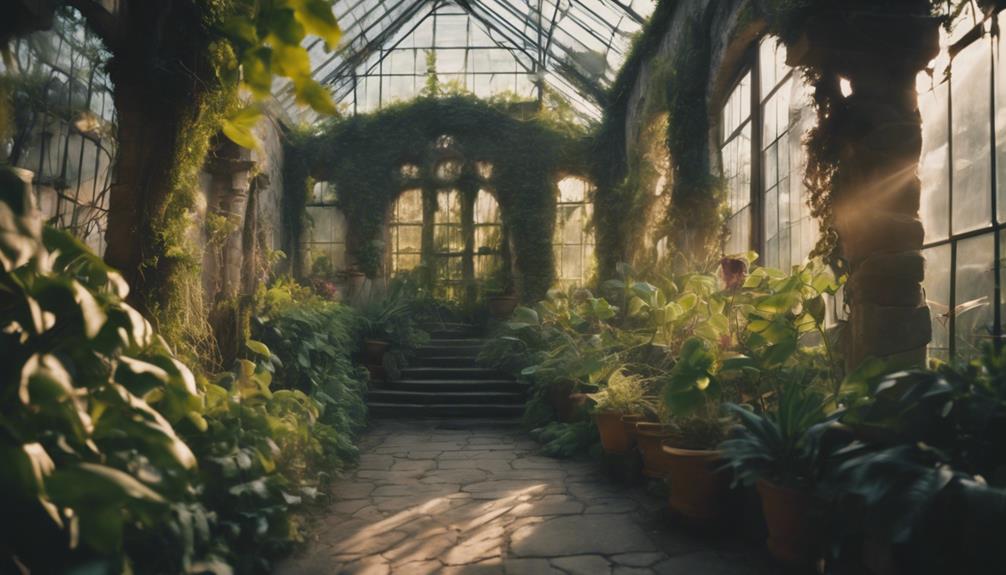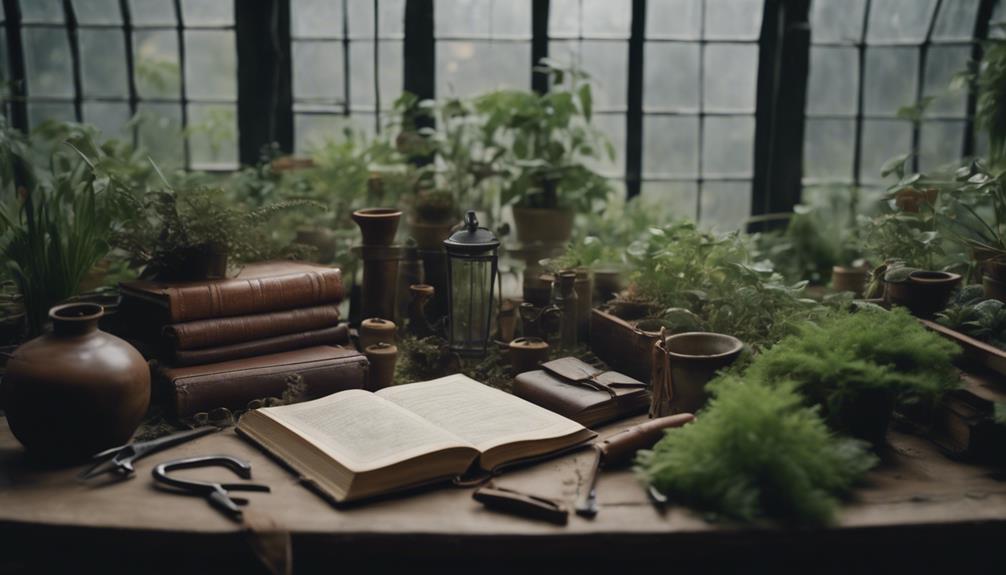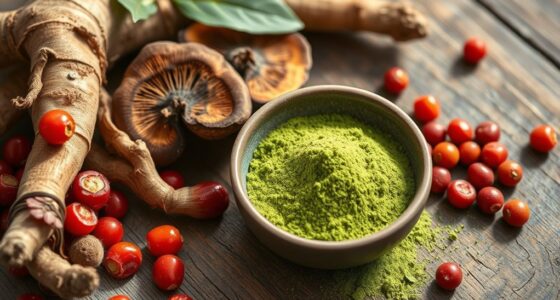We've been harnessing the natural healing properties of plants for thousands of years, with 80% of the global population relying on herbal remedies as a primary form of medicine. Herbology, or herbalism, focuses on medicinal plants for health, emphasizing the human-plant connection and nature's role in wellness. It's a legitimate field of study that's been practiced for centuries, combining ancient wisdom with modern scientific understanding. By understanding plant biochemistry, herbalists develop natural remedies addressing the root causes of illnesses. As we continue to explore the intricate balance between humans and the environment, we uncover more about the therapeutic capabilities of plants and their potential to revolutionize wellness.
Key Takeaways
• Herbology, also known as herbalism, is a legitimate field of study focused on the medicinal uses of plants.
• With a history spanning over 5,000 years, herbalism has been a primary form of medicine in many ancient cultures.
• Herbalists develop natural remedies that address the root causes of illnesses, combining traditional knowledge with modern research.
• Herbology is a complementary therapy that can work in conjunction with conventional medicine to promote holistic health.
• Certification through organizations like the American Herbalist Guild ensures safe and effective care by qualified herbalists.
Defining Herbology and Its Roots
As we explore the world of herbology, we find that this ancient practice has been woven into the fabric of human culture for thousands of years, with roots that stretch back to our earliest interactions with the natural world.
Herbology, also known as herbalism, is the study and use of medicinal plants for health and healing purposes. At its core, herbology is about understanding the human-plant connection and working with nature to promote wellness.
Traditional herbalists have developed a deep appreciation for the natural world, recognizing the intricate balance between humans and the environment. Through their work, herbalists aim to create personalized treatments based on symptoms and clinical exams, often drawing on traditional knowledge and time-honored practices.
As we delve into the world of herbology, we begin to appreciate the rich cultural heritage of this traditional practice, which has been passed down through generations of herbalists.
The Science Behind Herbal Remedies
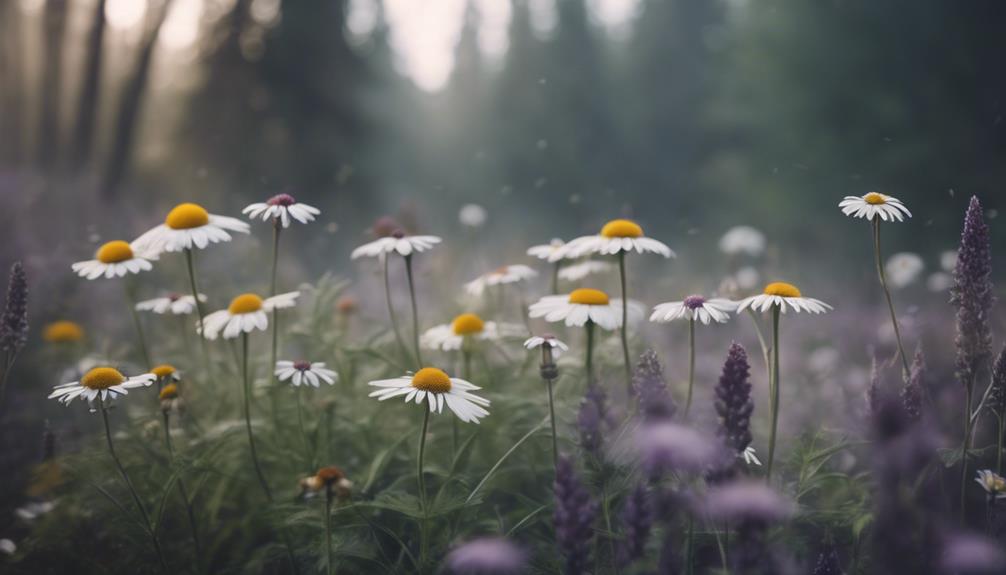
We've long been fascinated by the medicinal properties of plants, and the science behind herbal remedies lies in understanding how these properties interact with our bodies.
As we explore the world of herbal medicine, we're struck by the complexity of plant extracts and their effects on human health. Traditional herbal remedies have been used for centuries, with many cultures around the world relying on plants to treat various health conditions.
But what makes herbal medicine effective? Research has shown that certain plant compounds can engage with our bodies in meaningful ways, providing relief from ailments like pain, anxiety, and even chronic diseases. By understanding the biochemistry of plant extracts, we can uncover the secrets of herbal remedies and utilize their potential to improve our health.
While herbal medicine isn't a replacement for conventional medicine, it can be a valuable complementary approach for many people. As we continue to investigate the science behind herbal remedies, we're reminded of the vast potential of plants to heal and nurture our bodies.
History of Herbalism and Its Evolution
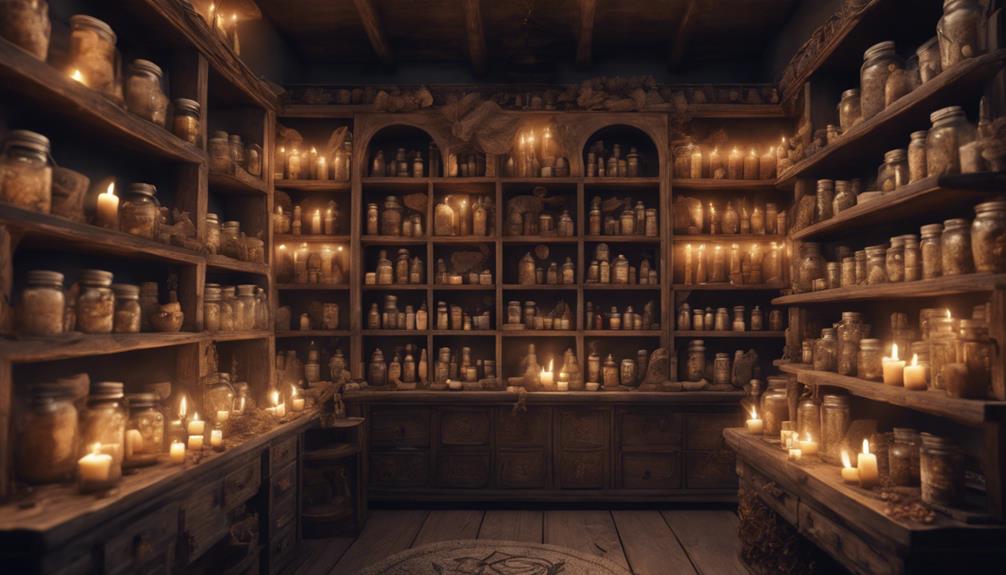
Exploring the roots of herbalism, we uncover a rich history that spans over 5,000 years, with ancient cultures relying on plants as their primary form of medicine. The history of herbalism is a testament to the ingenuity and resourcefulness of our ancestors, who developed a sophisticated understanding of the medicinal properties of plants.
As we investigate further into the evolution of herbalism, we find that it's not just a significant demonstration of the past, but a living, breathing tradition that continues to adapt and grow. Historical publications like the Edinburgh Pharmacopoeia from the 17th century provide valuable insights into traditional medicinal practices involving herbs.
Today, institutions like the Royal Botanic Garden Edinburgh offer courses, certificates, and diplomas in herbology, catering to the growing interest in reconnecting with nature and sustainable practices. As we explore the history of herbalism, we're reminded that this ancient practice has been a cornerstone of human health and wellness for millennia, and its evolution continues to shape our understanding of medicine and sustainability.
Modern Applications of Herbology
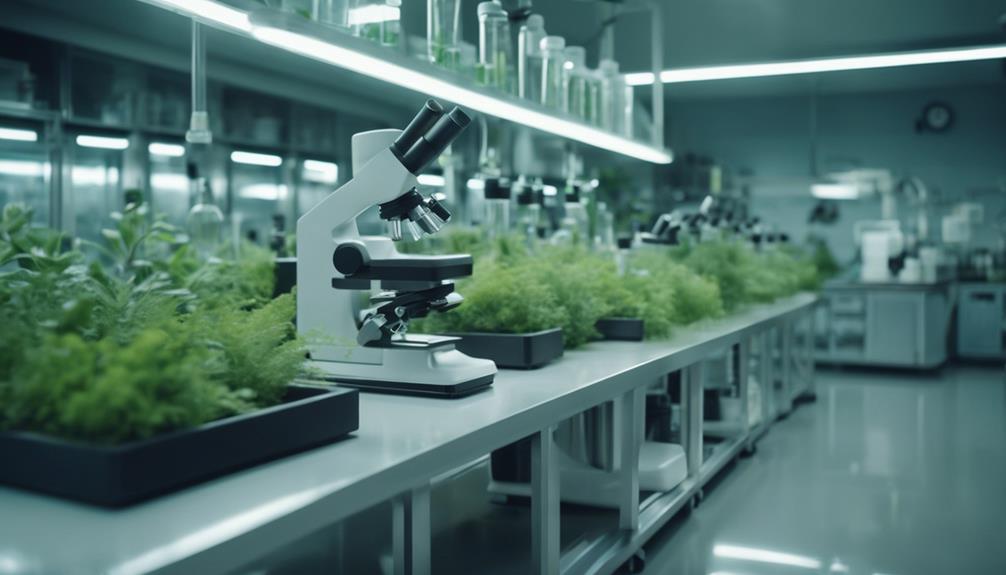
As we explore the modern applications of herbology, we're going to examine how this ancient practice has evolved to address contemporary health concerns.
We'll look at how medicinal herbal remedies are being used to treat various ailments, as well as the growing popularity of herbal skincare products that harness the natural healing properties of plants.
Medical Herbal Remedies
Today, medical herbal remedies play a significant role in modern healthcare, offering a natural and holistic approach to treating various health conditions. As we explore the world of herbology, we find that herbal medicine has been used for centuries, and its integration into conventional medicine is becoming increasingly popular. Herbalists study and utilize plant-based remedies to address health issues and promote overall well-being.
| Herbal Remedy | Health Benefit |
|---|---|
| Turmeric | Reduces inflammation and improves joint health |
| Ginger | Relieves nausea and aids digestion |
| Echinacea | Boosts immune system and fights off infections |
| Peppermint | Soothes digestive issues and reduces stress |
| Valerian | Promotes relaxation and improves sleep quality |
Herbal remedies have been used for centuries, and their therapeutic benefits are undeniable. As we continue to learn more about the healing properties of plants, we're discovering new ways to harness their power to improve our health. By embracing herbal medicine, we can take a more holistic approach to our well-being, and that's a promising prospect for the future of healthcare.
Herbal Skincare Products
We're witnessing a surge in popularity of herbal skincare products, which harness the natural healing properties of plants to address various skin concerns. These products utilize plant-based ingredients to promote healthy skin, showcasing the modern application of herbology.
Many consumers prefer herbal skincare products for their gentle, non-toxic, and environmentally friendly formulations. Herbology in skincare focuses on harnessing the natural power of plants to address skin concerns such as dryness, acne, and inflammation. Herbal products often contain herbs like lavender, chamomile, and calendula, known for their soothing and healing properties.
The rise in popularity of herbal skincare products reflects a growing interest in holistic and natural approaches to skincare. In Traditional Chinese medicine, herbal remedies have been used for centuries to promote skin health. Today, we're seeing a resurgence of this approach in modern skincare.
As we explore the world of herbal skincare products, we're discovering the potential of plant-based ingredients to transform our skin and our wellbeing.
The Role of Herbalists in Healthcare
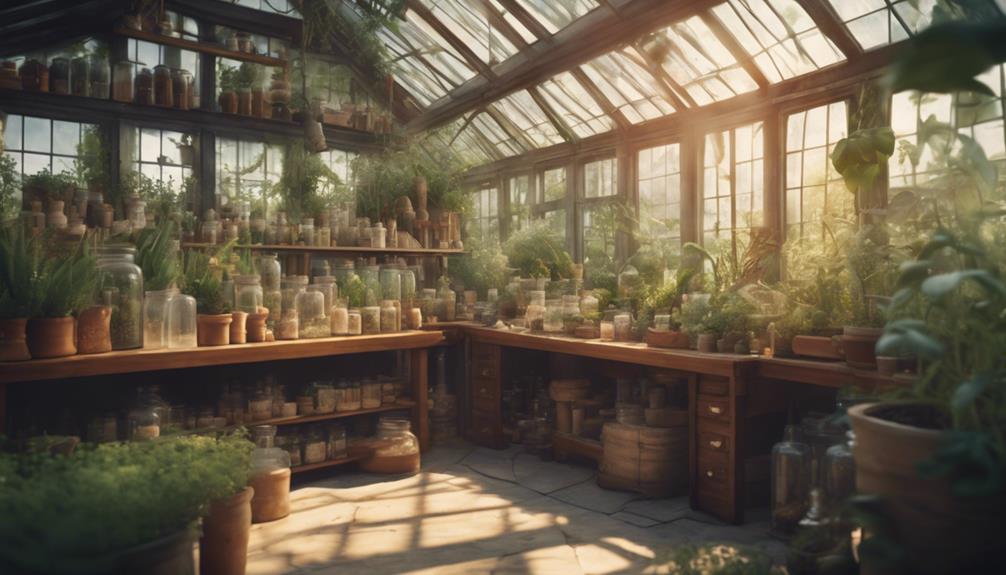
Herbalists take a holistic approach to healthcare, working closely with medicinal plants to develop natural remedies that address the underlying causes of illnesses. We recognize that each individual's health concerns are unique, and our goal is to identify the root cause of the problem, rather than just treating the symptoms.
To do this, we carefully select herbs based on individual symptoms, creating personalized prescriptions in various forms like teas, capsules, bath salts, oils, and skin creams.
In the field of Clinical Herbal Medicine, we draw on traditional knowledge and modern research to develop effective remedies. Many of us pursue formal education and certification through organizations like the American Herbalist Guild (AHG), ensuring we're equipped to provide safe and effective care.
When working with herbal treatments, we emphasize the importance of safety precautions, such as seeking advice from licensed herbalists and monitoring for potential side effects or allergic reactions. By combining our knowledge of medicinal plants with a deep understanding of human health, we're able to provide a unique and valuable perspective on healthcare.
Herbalism in Modern Medicine Today
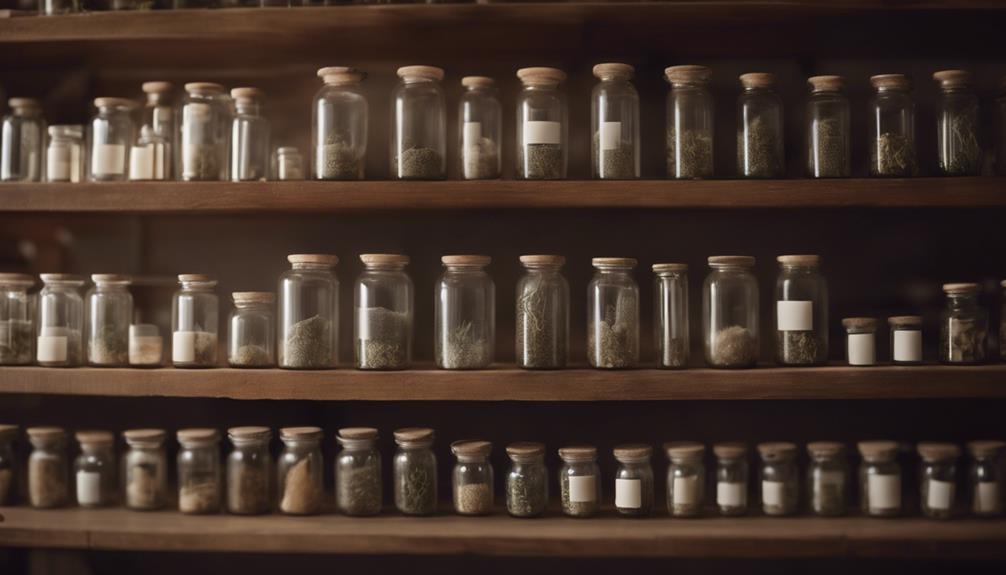
As we seek a more holistic approach to healthcare, the resurgence of herbalism in modern medicine is gaining momentum. In the United States, medical doctors are increasingly open to integrating herbal remedies into their treatment plans. This shift is driven by growing demand for natural and sustainable healthcare options.
Herbalism courses and programs are now offered by various institutions, educating individuals on the use of medicinal plants. As a result, more people are becoming aware of herbalism's potential benefits. The integration of herbal treatments with conventional medicine requires collaboration between herbalists and healthcare providers to guarantee safety and effectiveness. By working together, we can harness the power of medicinal plants to improve patient outcomes.
Moving forward, prioritizing education and research is crucial, ensuring that herbalism is used responsibly and effectively in modern medicine. By doing so, we can tap into the full potential of herbalism and provide more thorough care for patients.
Debunking Misconceptions About Herbology
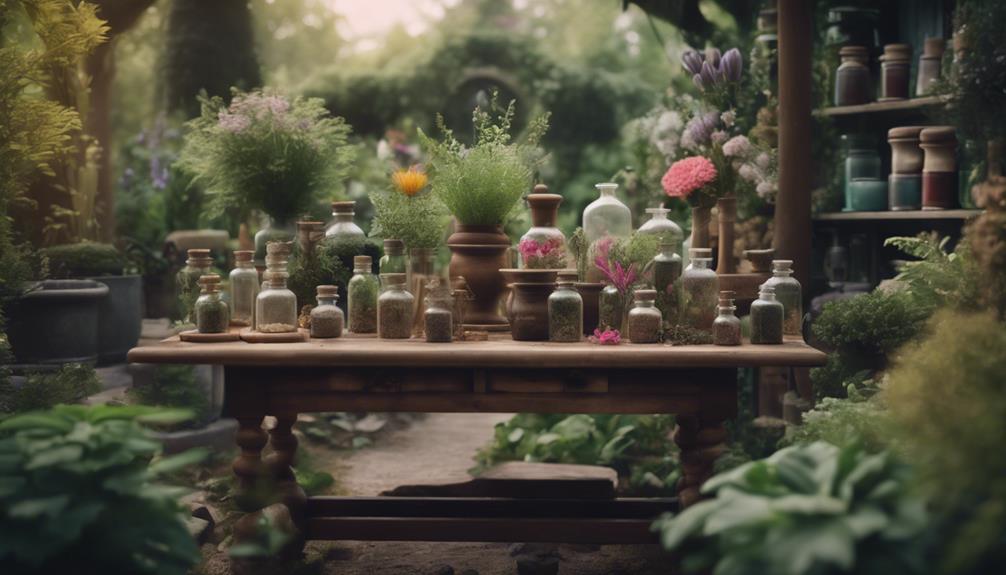
One major obstacle standing in the way of herbology's widespread acceptance is the prevalence of misconceptions surrounding this ancient practice.
We've all heard it before: 'Herbology is just a made-up concept from Harry Potter.' But nothing could be further from the truth. Herbology is a real and legitimate field of study that focuses on the medicinal uses of plants. It's been practiced for thousands of years and continues to be a popular form of alternative medicine.
Herbalists, who dedicate their careers to studying and working with medicinal plants, help individuals with various health concerns. They draw upon centuries-old herbal traditions, combining ancient wisdom with modern scientific understanding.
Unfortunately, misconceptions about herbology have led many to dismiss its validity. We're here to set the record straight: herbology isn't just a fictional concept, but a well-established discipline that deserves our respect and attention.
The Future of Herbology and Wellness

As we look to the future of herbology and wellness, we're excited to explore the ways in which healing with herbs can intersect with modern wellness trends.
We're seeing a growing interest in natural remedies, and herbology is perfectly positioned to provide a wealth of knowledge and resources to support this movement.
Healing With Herbs
We're now recognizing the immense potential of medicinal plants to revolutionize our approach to wellness, and the future of herbology is all about harnessing their therapeutic powers sustainably.
As we explore further into the world of healing with herbs, we're uncovering the importance of connecting with nature. By embracing sustainable practices and understanding the therapeutic capabilities of medicinal plants, we can reveal the secrets of herbology.
Herbology education emphasizes working with nature, nurturing the earth, and promoting sustainable practices in using medicinal plants. Herbology books like 'Herbology – A Physic Garden Pharmacy' provide valuable insights into historical medicinal plants and practices, offering recipes and remedies for modern use.
As we investigate the vast potential of medicinal plants, we're reminded of the importance of preserving our planet's biodiversity and respecting the delicate balance of nature. By doing so, we can guarantee a brighter, healthier future for generations to come.
Modern Wellness Trends
Let's explore modern wellness trends, where the revitalized interest in herbology is driving a shift towards a more natural, sustainable approach to health and wellness.
As we seek alternatives to traditional medicine, herbology is gaining popularity, and it's not hard to see why. With courses and certifications available, people are investing in botanical learning and plant-based remedies.
This renewed interest in medicinal plants and herbal treatments is paving the way for a more holistic approach to wellness. We're seeing a growing emphasis on working with nature, understanding the therapeutic potential of medicinal plants, and promoting sustainable practices for overall well-being.
The Royal Botanic Garden Edinburgh, for instance, offers herbology courses, showcasing the potential of medicinal plants in modern wellness.
As we move forward, it's evident that herbology will play a significant role in shaping the future of wellness. By embracing natural and sustainable approaches, we're taking an important step towards a healthier, more balanced lifestyle.
Frequently Asked Questions
Is Herbology a Real Study?
We often wonder, is herbology a real study?
The answer is yes! Herbology, also known as herbalism or botanical medicine, is a legitimate field of study focused on using plants for medicinal purposes.
With a rich history spanning over 5,000 years, herbology has been a primary form of medicine worldwide.
Today, herbalists can pursue certificates, diplomas, and courses to master the art of working with nature and understanding medicinal plants.
Are Herbalists Legitimate?
Exploring the world of herbalism, we recognize that the legitimacy of herbalists is a pressing question. As we investigate the realm of herbalism, we find that these practitioners are indeed legitimate. They're trained professionals who work with medicinal plants to promote health and healing.
Many have inherited herbal traditions, while others have become researchers, writers, or midwives, providing personalized treatments guided by their in-depth understanding of plants' medicinal aspects.
Do Herbalists Still Exist?
As we explore the world of plant-based healing, we find ourselves surrounded by a lush landscape of dedicated professionals.
Yes, herbalists still exist today, carrying the torch of traditional healing methods into modern times. They're the guardians of ancient knowledge, bridging the gap between nature and modern medicine.
From clinical herbalists to naturopaths, these practitioners continue to thrive, applying their expertise to craft personalized remedies that harness the power of medicinal plants.
Is Herbalism a Real Job?
We're often asked if herbalism is a real job. The answer is yes! Herbalists work with medicinal plants to promote health and healing.
We can pursue various careers, from traditional healers to scientists, and even herb growers. With a rich history spanning over 5,000 years, herbalism is a legitimate profession that requires dedication and knowledge.
We can become herbalists through self-study, apprenticeships, or formal education in Western Herbalism, Ayurveda, or Traditional Chinese Medicine.
Conclusion
As we weave through the winding world of herbology, we've unearthed the roots of this ancient practice, from its scientific underpinnings to its modern applications.
We've debunked misconceptions, highlighting the role of herbalists in healthcare and the evolution of herbalism.
As we move forward, the future of herbology promises a harmonious blend of tradition and innovation, fostering a fresh fusion of natural remedies and modern medicine.

